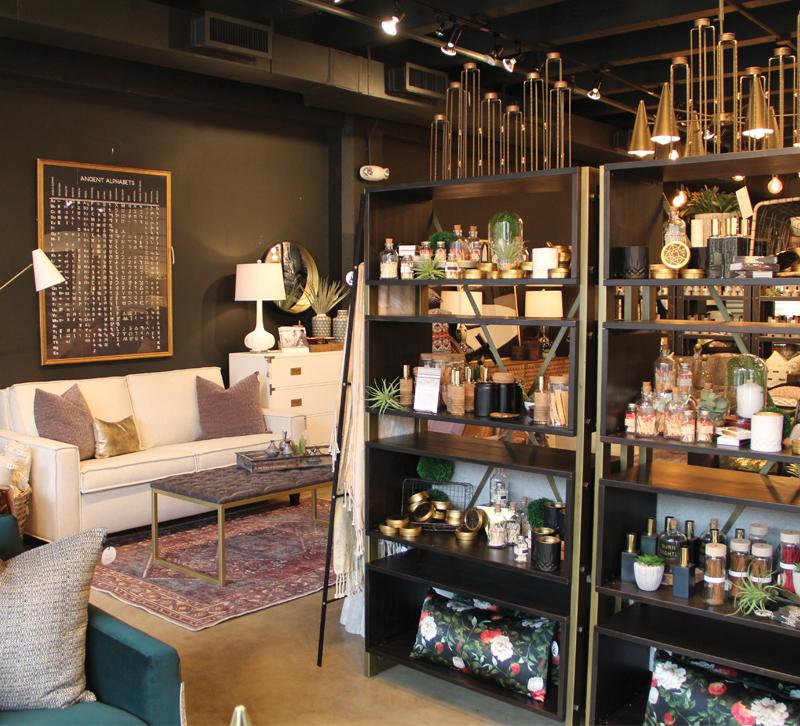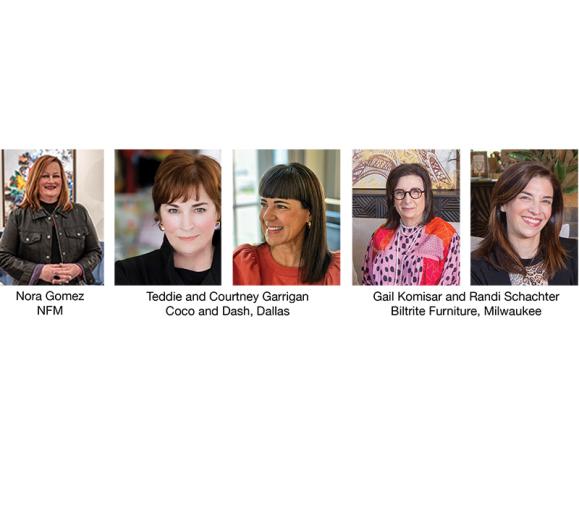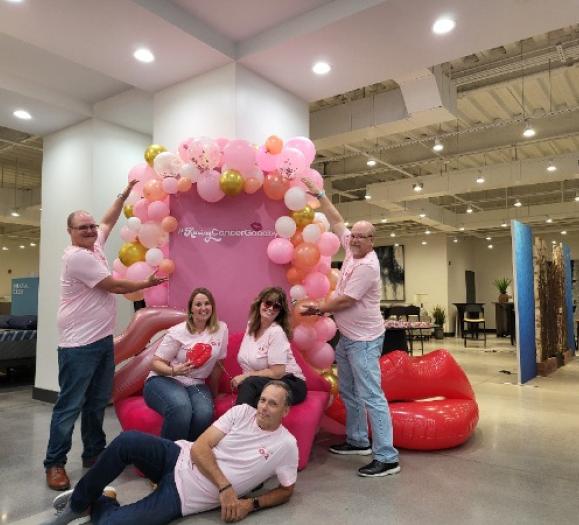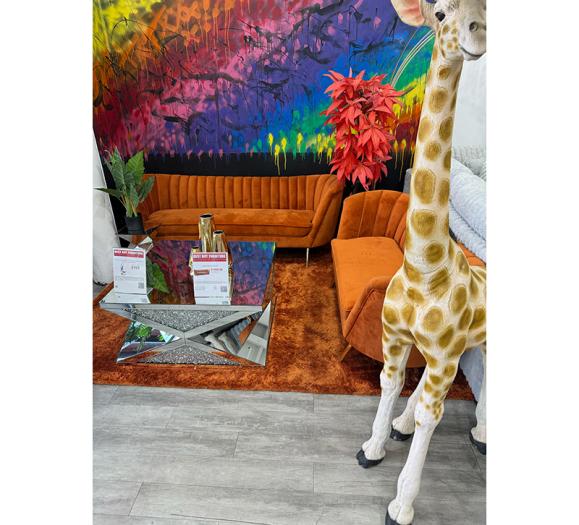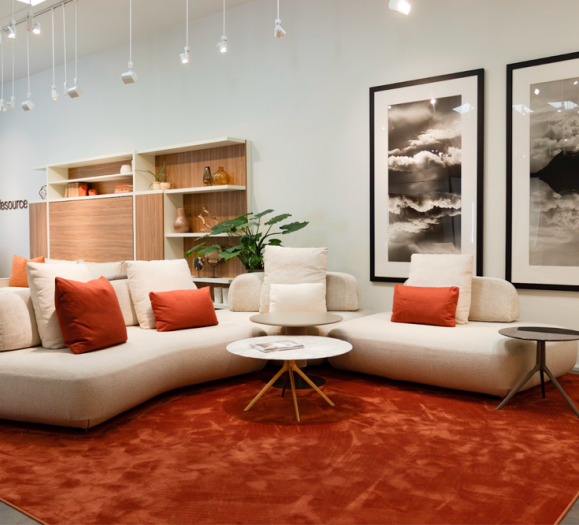Hudson & Crane
Before anything can be said about Washington, D.C.-based Hudson & Crane, one distinction must be made. Hudson & Crane is an interior design firm with a brick-and-mortar showroom. That’s an important fact to co-owners Jaye Langmaid and Lyric Turner.
A newcomer to the D.C. scene, Hudson & Crane opened in 2014 north of Dupont Circle. At just under 3,000 square feet, the store has changed its look over the last five years, and as they’ve gotten to know their customers and their habits, Langmaid and Turner kept their business nimble, making changes to accommodate customer tastes.
Take, for example, their merchandising. A year ago, the store nearly burst at the seams with more decorative accessories and decor, but Turner said keeping up with merchandising became overwhelming.
“Merchandising was almost a full-time job for one staff member,” she explains, “so with a smaller staff, we’re not as able to devote that much time to it.”
The strategy appears to have worked. The store feels warm and inviting with plenty of comfy sofas, chairs, soft throws and chunky pillows. Much of the product — best brands include Four Hands, Universal Furniture and American Leather — leans more modern in terms of aesthetic, but little pops of glam — a skull accessory here and there and starburst chandeliers — dot the room. Decor and accessories can still be found. In fact, Langmaid and Turner say above everything, candles still sell the best in store.
“Candles will always stick around,” Langmaid jokes.
Langmaid and Turner first met 10 years ago while working for the same home staging company. Then, as Turner says, “we got this wacky idea to open up a design studio,” and Hudson & Crane was born.
So why the distinction of being a design firm with a brick-and-mortar studio rather than a showroom with interior design services? It comes down to service and the way customers buy home furnishings nowadays.
“We’re in the age of Amazon Prime where everybody expects to get everything faster and cheaper,” Langmaid explains. “They’re always doing a direct price comparison online, and we don’t want to be thought of as retail because retail always has competition online whereas service is harder to find competition online.”
Design Levels
With this new consumer mindset, Langmaid and Turner set out to create an experience-based, service-first design model that targets clients with a serious interest in good design. That’s always been their goal, but like any good business owners, they’ve adapted their business model to hit that dollar volume needed to stay in business. The D.C. Metro area is not a forgiving market, so if something in their model isn’t working, Langmaid and Turner have no problem trying something new.
That’s how they created their design service levels: Design Intervention and Design Salvation. Clients at the Intervention level already have their favorite furniture pieces for the most part, but they’re not sure how to put the room together. With this service, the client will have a Hudson & Crane designer’s attention for a full 90 minutes, and they can pepper the designer with as many questions as they want about anything in the home. Then the designer leaves, and the client can then decide where furniture should go and what else he or she should purchase. Clients pay a fee for this service, and Turner says those clients many end up coming back in another six months or so once they’ve decided on what they want.
The Salvation service covers everything. Clients start with a homework assignment to help the designer and the client “speak the same design language,” as Turner says. Modern doesn’t always mean the same thing to everyone, so the homework assignment gets everyone on the same page. Then the client has a meeting with the designer for up to two hours to dive into the client’s taste, style, vision and budget. After the designer completes a customized design concept, the client is invited to the studio and presented with the final plan and furniture recommendations.
Both services emphasize just that — stellar service — but the design fee payment method makes it possible. With both services, clients do not have to purchase from Hudson & Crane. Instead, Salvation clients receive a 15 percent discount on any furniture purchased through the store. It may sound counterintuitive, but it takes the pressure off Langmaid and Turner.
Like any other showroom in the U.S., Hudson & Crane faces competition from Amazon and other big-box retailers, and Langmaid and Turner have had customers shop around them online. In previous versions of their design service levels, clients paid a set amount upfront, but when they bought $5,000 worth of furniture from Hudson & Crane, part of the money invested upfront went towards that purchase. Langmaid and Turner soon noticed a pattern where clients would spend just enough to get their credit back and then move on to other vendors. The 15-percent-off model, however, makes clients feel like they’re getting a good deal.
“We’re not losing our shirt on doing all this design work up front and then crossing our fingers and saying ‘I really hope they buy something,’” Langmaid explains.
This new version of Hudson & Crane’s design services launched late last summer, so Langmaid and Turner can’t say for sure how successful it has been just yet. They may still tweak it in the future, but for now, feedback has been positive and clients seem to like the process.
Adapting to the Market
Langmaid and Turner’s ability to adapt quickly extends to their e-commerce and marketing strategies as well. Right now, they’re selling a few products online through a third-party website and in the future, they’d like to feature shoppable images on their site with links to products on their Design Collective page. Building their own e-commerce website just isn’t in the cards right now.
And while they’re using digital marketing tools and social media, Langmaid and Turner want to focus more on live events and sponsorships where they can get in front of the clients they want to work with. This type of marketing builds relationships and encourages word-of-mouth referrals — the gold standard of marketing for Hudson & Crane.
But it may be their backgrounds in home staging that drives Hudson & Crane to success more than anything. Not long ago, Langmaid and Turner staged a condo for a building at the Wharf, just south of the National Mall along the southwest waterfront. That one model unit alone brought them business from a number of great clients that moved into the building and wanted to work with the designers who did the model.
“We’re trying to make working with a designer accessible and rewarding,” Langmaid says, “and I think that for the people that are finding us — whether it’s via our marketing efforts or organically — they think ‘Yeah, this is a great idea.’”
Illuminations Inc.
Retailers across the country know that what sells well in their own backyards may not do especially well in someone else’s on the other side of the country, state or even city. So when thinking about what sells well in Washington, D.C., images of Colonial-styled homes likely come to mind.
How about contemporary? Better yet, how about an entire showroom dedicated to contemporary lighting fixtures?
Located in a small 4,000-square-foot showroom just a few blocks from the National Mall, Illuminations Inc. may seem modest at first glance, but the showroom, which specializes in contemporary design, houses the sleekest, chicest and newest lighting fixtures for those curious enough to take a look. And that specialty makes it stand out from other lighting showrooms in the area.
“A lot of the people coming into the showroom come in here to see one fixture,” explains Lighting Designer Tess Leland. “They found it through the manufacturer’s website, and they found that we’re their retailer and they come to look at it.”
Though there’s plenty of foot traffic in the area, most clients come in having already done some homework on what they want, and the staff at Illuminations can help them in two ways. For customers who want just one fixture over a dining table or in the foyer, a sales associate on the showroom floor will guide the client from start to finish, recommending finishes and ensuring the right size is ordered. For those customers in need of a whole-home lighting design, lighting designers like Leland step in.
Designer Expertise
The lighting design team works with residential and commercial clients to design and install an entire lighting layout, and it takes a savvy designer to get the project just right. When a client comes on board, a lighting designer will visit the site or look at the plans, listen to what is needed and wanted and create a plan that meets as many needs and wants as possible. Designers need to be good listeners and think critically about the function and layout of the space. Clients depend on their expertise and often save themselves costly mistakes by hiring a professionally trained designer.
“Sometimes you want one thing,” Leland says, “but it’s not what you need and it just doesn’t reach that goal.”
Once the client agrees to the project, Leland and her fellow designers will start the design, drawing it up in autoCAD and, after approval, ordering the fixtures needed. The most challenging part of designing lighting plans in D.C.? Concrete ceilings, according to Leland. Newly constructed restaurants and apartments usually have concrete ceilings, which complicate the plan, but it’s nothing Leland and her team can’t handle.
With so much in-house design work, it would make sense for Illuminations to avoid working with interior designers and losing business, but the showroom does support a good amount of work from designers and architects. Lighting designs require more technical knowledge than many designers have, so they rely on Illuminations to work out a good lighting plan and get it installed correctly. Everyone leaves the showroom happy. And of course, some designers bring in clients who want to choose a fixture, and that business does well too.
Competing with Online
For all the ways Illuminations stands out, the showroom still struggles to compete with the allure of the internet. It used to be unusual for someone to come in to look at a fixture, look it up and buy it elsewhere online and then call Illuminations asking for help, but Leland has seen it happen more often these days. She hears from customers that online sellers have the products in stock and will offer free shipping, but she knows better. None of the manufacturers that Illuminations works with stock products or offer free freight, but as she jokes, everything’s real on the internet.
That partnership with manufacturers makes up the foundation of Illuminations’ strategy against the internet. The showroom doesn’t sell online, but it uses real-world ways to combat the cyber world. In the showroom, none of the fixtures have prices or the manufacturer’s name listed on the tag. That stops some showrooming customers, but more than anything, it saves time spent changing fixture prices as many manufacturers change prices quickly and without a lot of notice. If asked, the staff will tell customers who made the fixture, but few ask.
Illuminations also doesn’t run sales, but that doesn’t mean the team isn’t monitoring price changes and other online sales. Leland keeps tabs on which manufacturer may be running a sale and tries to set prices accordingly. When someone does price match in store — and show a product on a reputable seller’s site — Illuminations will price match. But more than anything, the amount of work that goes into keeping up with the internet leaves the team feeling like they’re fighting an uphill battle.
“It’s a really slow struggle, and you have to make up a lot for what you’re losing,” Leland relates. “It’s a lot of time, and it’s kind of exhausting.”
In the fight to stay ahead of online retail, pricing can be one of the biggest factors to drive customers into showrooms. While Illuminations offers fixtures in nearly all price ranges, the showroom specializes in more high-end fixtures, with pendants costing between $500 and $1,000, and chandeliers, several thousands of dollars. With such an investment, customers feel more compelled to shop in-store and make sure they’re getting exactly what they want.
And it’s not only older, wealthier, less internet-loving clients that come in. Leland sees plenty of younger, established couples coming in to pick out fixtures. At the end of the day, Illuminations’ clients all want the same thing, and the talented people working in the showroom just want to give it to them.
“The space that you live in looks beautiful and makes you feel good, that’s all you need,” Leland believes. “You just want to feel good in your home."



